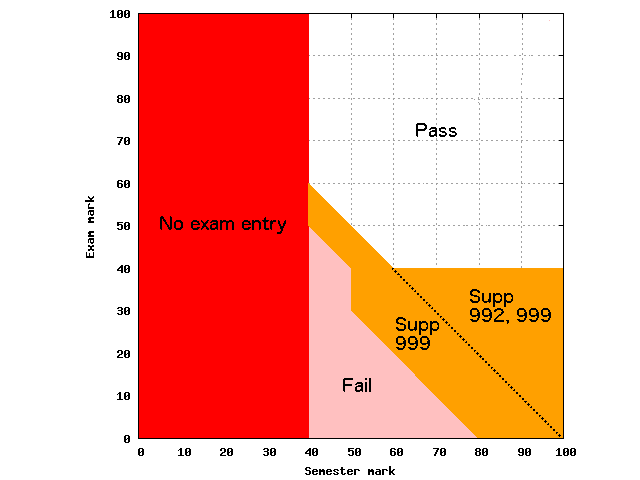Calculating Marks
From Chemical Engineering @ UP wiki
Contents
Calculating marks
Rounding
Make sure that you round the semester mark, the exam mark and the final mark and rework with integer percentages (avoid the use of the Excel Percentage type, as this hides some common errors). Useround(mark/total*100, 0)
Supplimentary exams
Always check the relevant yearbook. The following description is from the 2009 Yearbook.
In the School of Engineering a supplementary examination is only granted in instances where:
- A final mark of between 45% and 49% was achieved;
- A final mark of between 40% and 44% was achieved and where the candidate also achieved either a semester mark or an examination mark of 50% or higher;
- A pass mark has been obtained, but the required subminimum in the examination section of the module or divisions thereof has not been obtained.
- First-year modules on 100 level where a final mark of between 40% and 49% has been obtained, must be granted a supplementary examination.
This is summarised in the picture:
Calculation of the final supplementary examination mark
- The semester mark is retained and the final mark is calculated as the weighted average of the supplementary examination mark and the semester mark, in accordance with the formula as published in the study manual of the specific module, with the proviso that the maximum final mark awarded may be no more than 50%. The only exception to this rule is in the case of first-year modules on first-semester level, where the semester mark is not considered, and where the supplementary examination mark is taken as the final mark, with the proviso that the maximum final mark awarded may be no more than 50%.
- All other pass requirements, as published in the study manual of each specific module, remain so and are applicable during the determination of the final result of a supplementary examination in the module.
